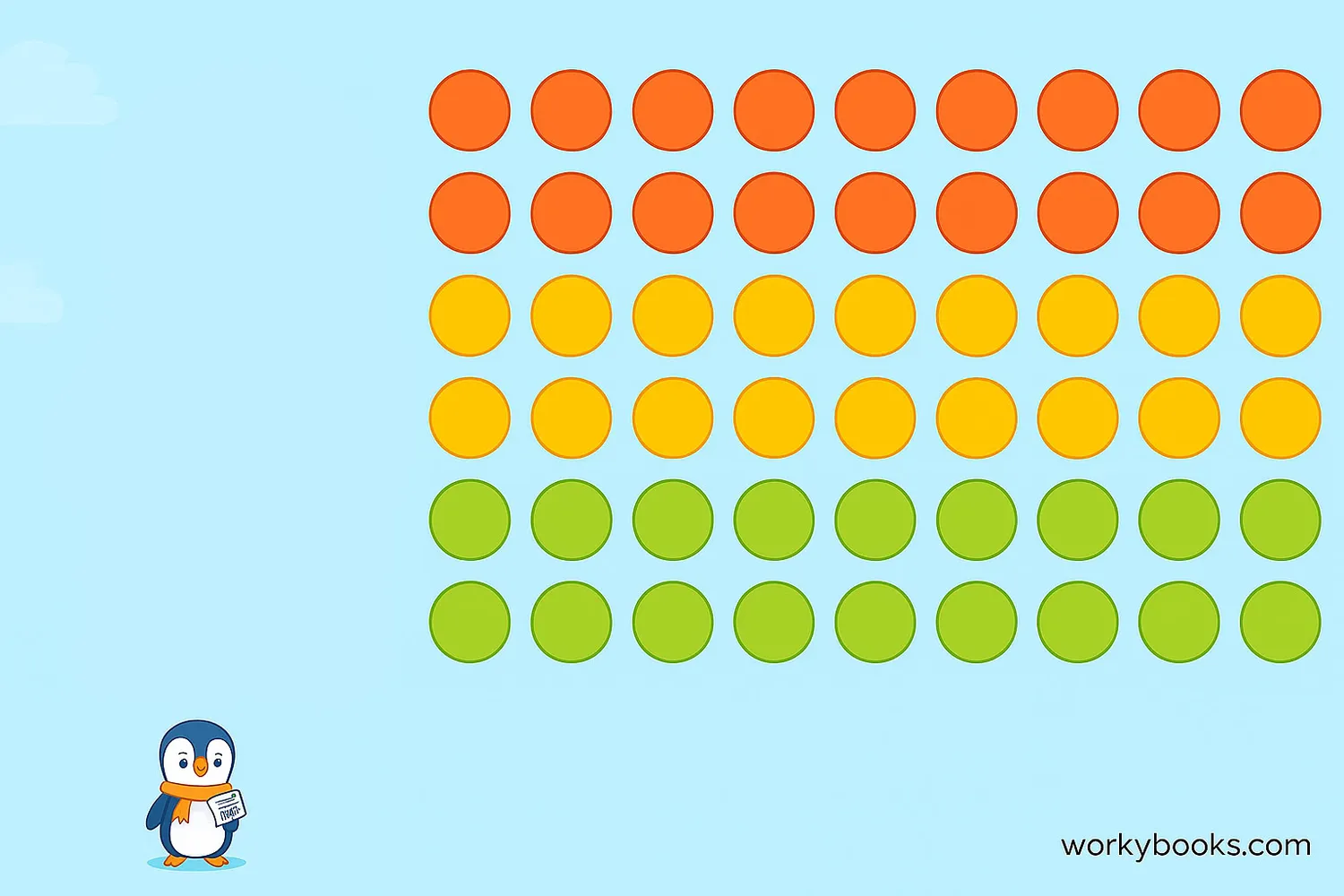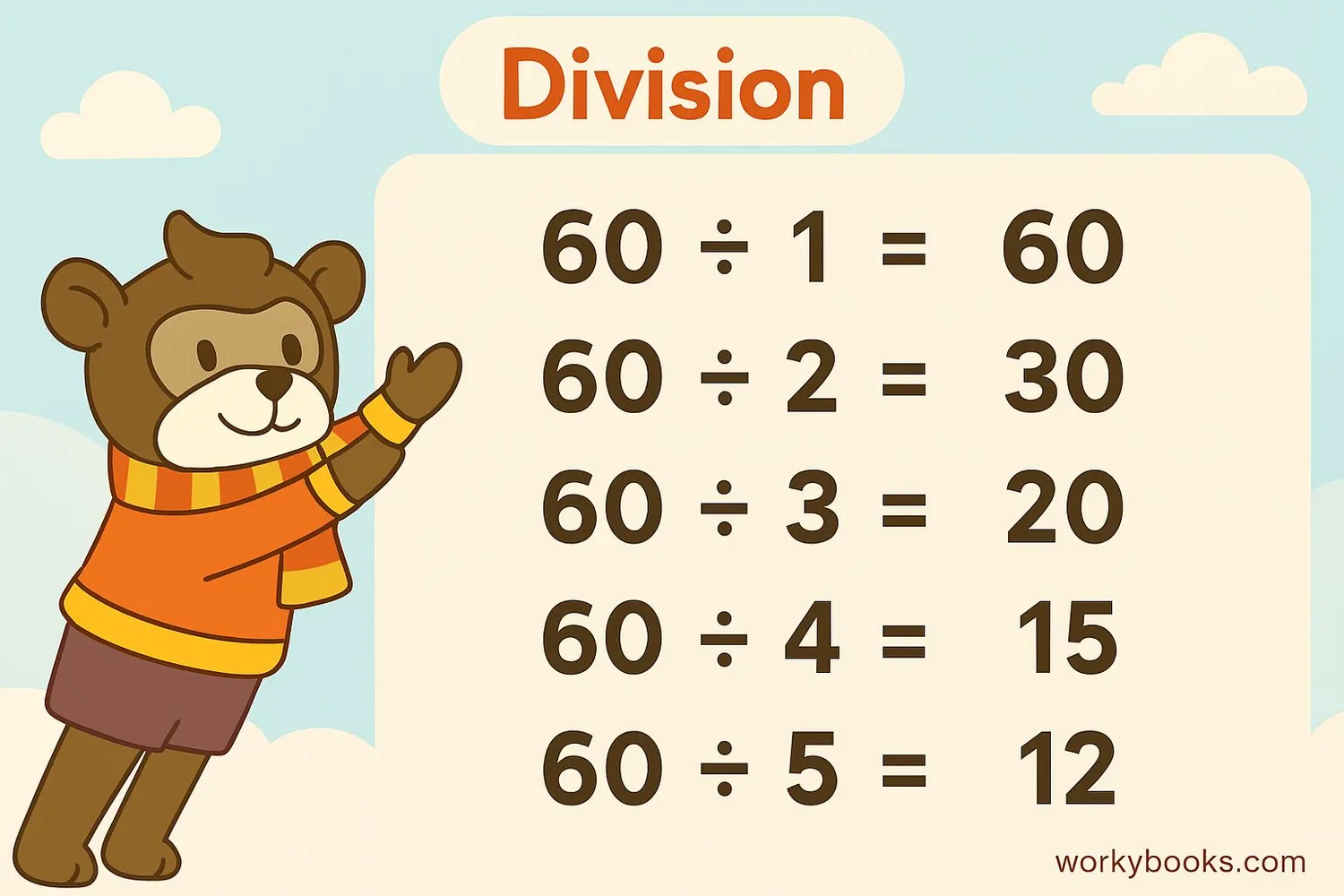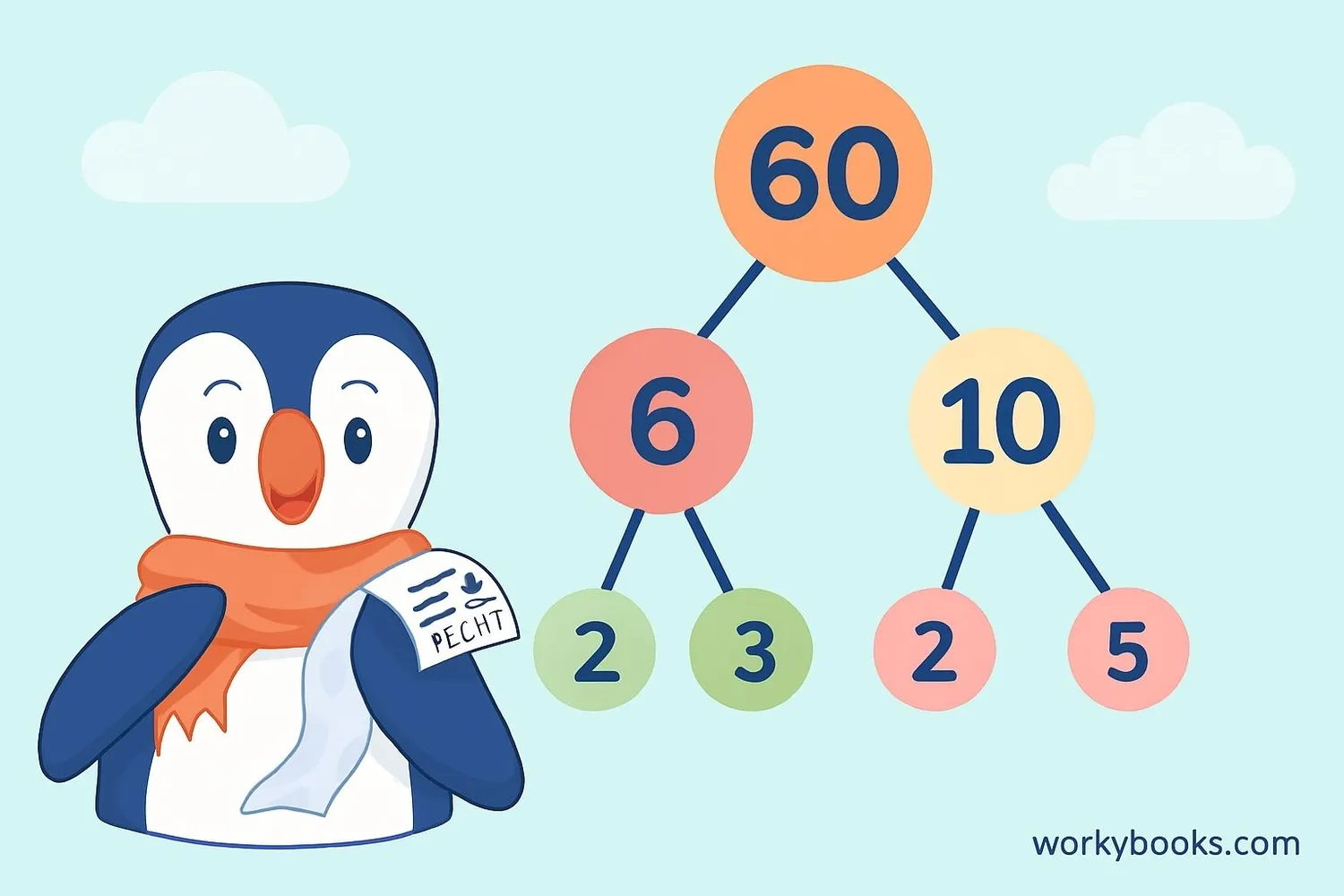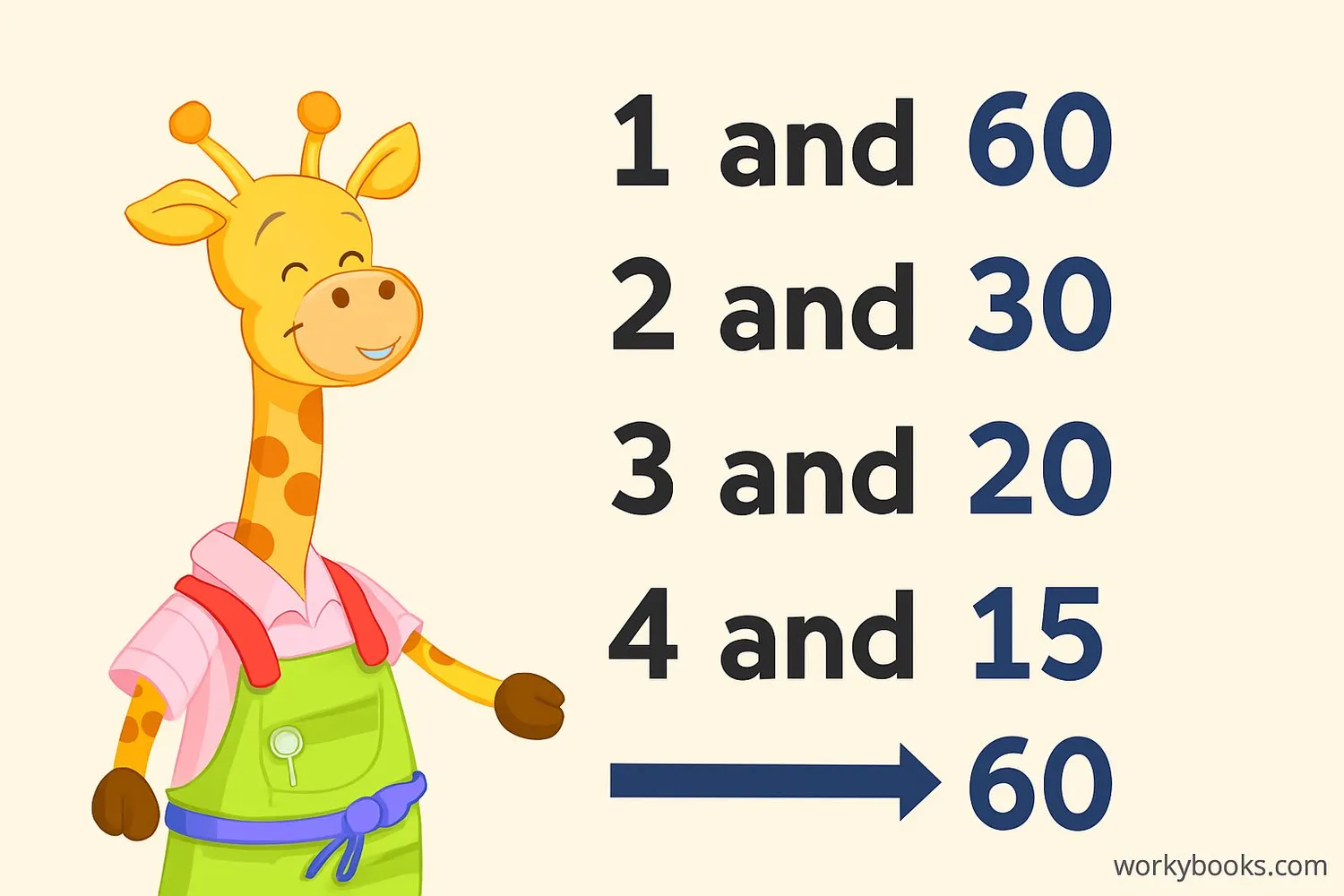Factors of 60 - Definition, Examples, Quiz, FAQ, Trivia
Learn how numbers multiply together to make 60 with easy explanations and practice activities
What are Factors?

Factors are numbers you multiply together to get another number. For example, the factors of 60 are all the numbers that multiply together to give 60.
Think of factors like teams that work together to create a bigger number. If you have 60 cookies, factors are the different ways you can share them equally among friends without any cookies left over.
Key facts about factors:
- Every number has at least two factors: 1 and itself
- Factors are always less than or equal to the number
- 60 is a composite number because it has more than two factors
Key Concept
A factor is a number that divides another number evenly with no remainder. For 60, we're looking for numbers that divide into 60 perfectly.
How to Find Factors of 60

Finding factors is like solving a puzzle! Here's how we can find all the factors of 60:
Step 1: Start with 1. 1 × 60 = 60, so 1 and 60 are factors.
Step 2: Try 2. 2 × 30 = 60, so 2 and 30 are factors.
Step 3: Try 3. 3 × 20 = 60, so 3 and 20 are factors.
Step 4: Continue with 4, 5, 6, etc. until you start repeating factors.
When we do this for 60, we find these factors:
There are 12 factors of 60 in total. That's more than most numbers!
Remember
Factors come in pairs. Each pair multiplies to 60. When you find one factor, you automatically find its partner!
Prime Factors of 60

Prime factors are the building blocks of a number. These are the prime numbers (numbers with exactly two factors) that multiply together to make the original number.
We can use a factor tree to find the prime factors of 60:
Step 1: Start with 60 and find two factors: 6 × 10
Step 2: Break down 6 into 2 × 3 (both prime)
Step 3: Break down 10 into 2 × 5 (both prime)
So the prime factors of 60 are 2, 2, 3, and 5. We write this as:
Prime Factorization
Or using exponents: 60 = 2² × 3 × 5
This means that no matter how we break down 60, we'll always end up with these prime factors. They're like the DNA of the number 60!
Factor Pairs of 60

Factor pairs are two numbers that multiply together to make the original number. For 60, there are six positive factor pairs and six negative factor pairs.
Positive Factor Pairs:
| Pair Number | Factor Pair | Multiplication |
|---|---|---|
| 1 | 1 and 60 | 1 × 60 = 60 |
| 2 | 2 and 30 | 2 × 30 = 60 |
| 3 | 3 and 20 | 3 × 20 = 60 |
| 4 | 4 and 15 | 4 × 15 = 60 |
| 5 | 5 and 12 | 5 × 12 = 60 |
| 6 | 6 and 10 | 6 × 10 = 60 |
Negative Factor Pairs: We can also have negative factors since multiplying two negatives gives a positive. The negative factor pairs are the same as the positive pairs but with negative signs:
| Pair Number | Factor Pair | Multiplication |
|---|---|---|
| 1 | -1 and -60 | -1 × -60 = 60 |
| 2 | -2 and -30 | -2 × -30 = 60 |
| 3 | -3 and -20 | -3 × -20 = 60 |
| 4 | -4 and -15 | -4 × -15 = 60 |
| 5 | -5 and -12 | -5 × -12 = 60 |
| 6 | -6 and -10 | -6 × -10 = 60 |
Remember
Factor pairs are like partners that work together. Notice how they multiply to give the same product (60) every time!
Factors Practice Quiz
Test your knowledge about factors of 60 with this 5-question quiz. Choose the correct answer for each question.
Frequently Asked Questions
Here are answers to common questions about factors of 60:
Math Trivia
Discover interesting facts about numbers and factors:
Ancient Number Systems
The ancient Babylonians used a base-60 number system around 2000 BC. This is why we still have 60 seconds in a minute and 60 minutes in an hour today!
Highly Composite Numbers
60 is a "highly composite number" because it has more factors than any smaller number. Only 1, 2, 4, 6, 12, 24, 36, 48, and 60 have this property under 100.
Time Measurement
The division of time into 60-minute hours and 60-second minutes comes from ancient astronomers who used the base-60 system for its divisibility.
Factor Record
The number with the most factors under 100 is 60 with 12 factors. The next champion is 84 with 12 factors too, followed by 90 with 12 factors.





